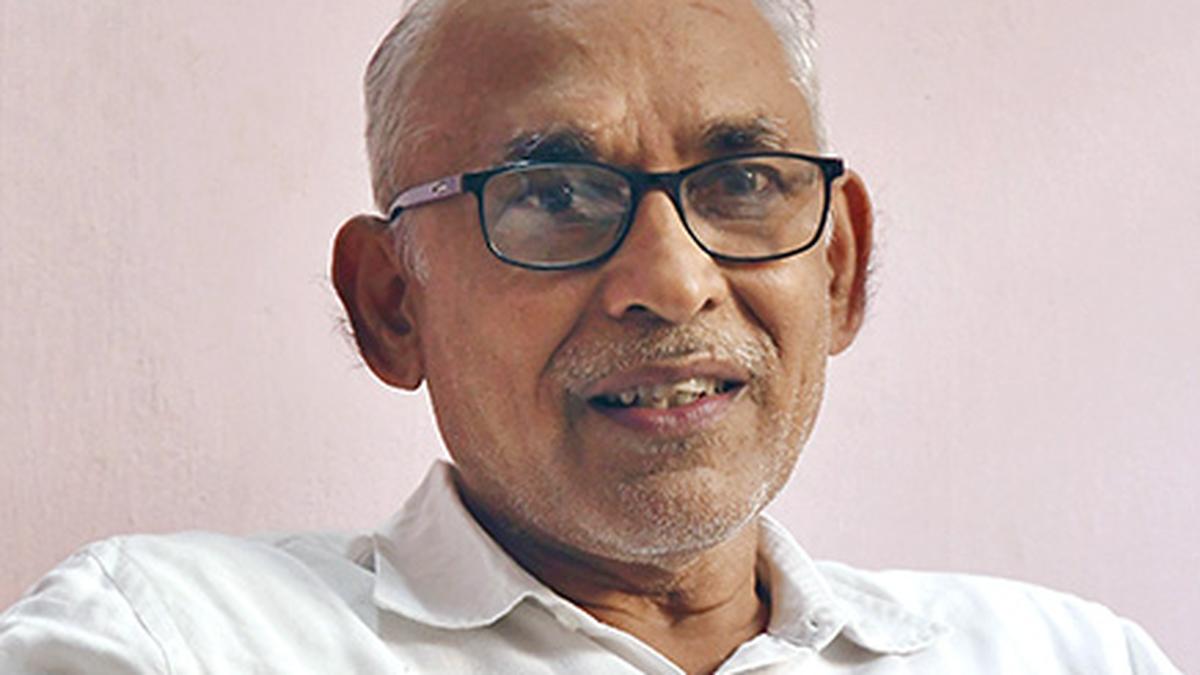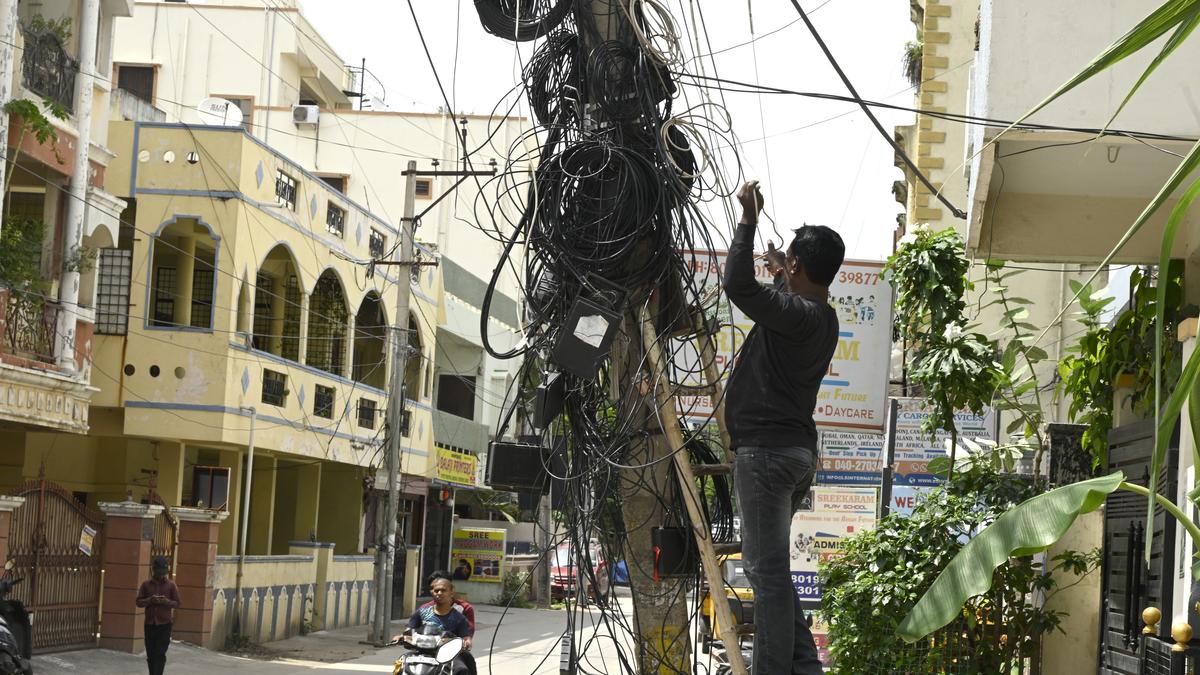The dark monsoon clouds that hung over Fazilka have given way to sunlight that filters through the eucalyptus trees surrounding the government middle school at Salem Shah village. Kirna Rani, 22, cannot enjoy it. She sits on the floor of the corridor, gently stirring a saucepan of water and a flour-jaggery mixture over a shared mini-gas-cylinder stove.
These are emergency rations, given to those who were forced out of their homes in Punjab’s floods that killed 55 and left thousands homeless. Heavy rains put the Sutlej, Ravi, and Beas rivers in spate, and they soon overflowed their banks inundating low-lying areas and farmland.
Rani and her family of four, along with a dozen other people from her village, who had been at the school that was transformed into a camp overnight, feel the weight of uncertainty. “The water started to rise in the Sutlej close to our village, somewhere in early August. Initially, it was rising slowly and we didn’t anticipate that it would suddenly swell,” she remembers.
The night after Raksha Bandhan, on August 10, when women tie threads on their brothers’ wrists for protection, she says water gushed into their three-room house in Dona Sakandri village in Fazilka district. They waded through knee-deep water, most of their belongings destroyed, yet clinging to the hope that the water would recede. “For a few days, we stayed inside the house. We climbed on tables and tried to survive,” she says. They realised their paddy crop, planted across 5–6 acres had been submerged and destroyed.
The Army rescued families by boat, taking them to Kawan Wali Pattan village across the Sutlej. Dona Sakandri and about a dozen other villages lie between the Sutlej and the Pakistan border. A bridge connects them to the rest of India, but the river raged over it. This strip of land was impacted during Operation Sindoor, in May, when schools were closed and villages underwent safety drills.
Rani’s two children, three-year-old Tavanjot and Harsimrat Kaur, who is still a baby, huddle close to her hoping to get their favourite meal soon. “It’s difficult to stay in the camp for long, but there’s no other option. We don’t know how long we will have to stay here. I don’t know whether our house is even intact. Nothing will be the same as before,” she says, hoping the government will compensate them.
The relief camp at the school building is one of 111, sheltering 4,600 people, set up in the flood-affected areas of Punjab, the country’s grain bowl. Besides Fazilka, Gurdaspur, Amritsar, Hoshiarpur, Kapurthala, Jalandhar, Ludhiana, and Ferozepur, were all impacted.
People still remember the floods of 1988, when several hundreds died here, a part of devastation across several States in north India. This time, according to the State government, almost 4 lakh people have been affected in about 2,200 villages across Punjab.

(Left) An isolated and marooned village in Sultanpur Lodhi area of Kapurthala district in Punjab in 1988; (right) people leave flooded houses in Ludhiana city. Photos: Special Arrangement
Boats and bridges
Sham Singh, 36, from Rete Wali Bhaini village, doesn’t own land and works as a daily wage labourer on farms. “My house has been badly damaged by the floodwater. With most farmland under water, I have no work. For the past couple of weeks, my family (of five) has been here at the camp, but I am worried about how I will sustain them once the camps are closed,” says Singh, the sole breadwinner.
Balwant Singh, 65, a farm labourer from Teja Ruhela village, says,“A big problem for most of us living in the village is that land is not registered in our name. Most families settled here after the Partition (India-Pakistan in 1947). Many of us will not get financial relief as we do not have any documents. Where do we go? What do we do?”
Punjab received 253.7 mm of rain in August, which was 74% in excess of normal, according to the India Meteorological Department (IMD). Now, the floodwaters recede with the retreating monsoon, but people’s lives are not returning to what they were used to.
Chand Singh, 65, from Ram Singh Bhaini village, gauges the current of the water flow before he takes a call to walk over the bridge from Kawan Wali Pattan village. Chand says, “For the first time in years, I have seen water flowing over this bridge. The water has receded now, but the current is still strong, so I’ll take a boat.” He has been able to stay, because water didn’t enter his house. He crossed the river in the morning to get a few medicines and rations.
His neighbour, Sukhvinder Singh, 30, rues that while the administration has provided manually operated boats, villagers have to row the boats by themselves. Most are not trained to do this, which puts their lives at risk, he says. “There’s also a shortage of safety jackets,” says Sukhvinder, a daily wager. He has come with Chand to replenish fodder and cattle medicine stocks.
“Relocating cattle to dry, high ground has been challenging. Teams of veterinarians have been paying visits, but the situation requires more attention. Also, there’s a shortage of cooking gas cylinders now, forcing many to share the limited supplies,” he says.
Survival through the storm
As relief efforts continue, the residents face the dual challenge of immediate displacement and long-term livelihood loss. Mukhtiar Singh, 50, a school cab driver, is anxious about his family’s sustenance amid the crisis. “I have a family of eight to support and our meagre savings are nearly depleted. The floods have submerged my village and surrounding areas. I can’t drive my school cab, and with no work available for my two sons, who are daily wagers, our situation is dire,” he says.
Balwant Singh, the Sarpanch (village head) of Jhangar Bhaini, feels that the miseries have in fact just begun. “As the water level has started to go down, the sight of destruction is slowly revealing itself. In my village, there are around 270 houses and almost all of them have suffered damage, completely or partially and the entire crop has been lost. Animal carcasses can be seen at some places, the stench is unbearable and there is a growing fear of disease outbreak.” He says the administration is working hard to provide relief though.
Fazilka’s Deputy Commissioner Amarpreet Kaur Sandhu points out that of 30 relief camps immediately set up in the district, 14 remain active, sheltering 2,946 people. “Till September 9, about 12,539 ration kits have been given to affected families. Additionally, 6,190 bags of cattle feed have been distributed for livestock,” she says. Many people have brought their cattle to the relief camps, and the government is supplying green fodder for their feed.

Residents of Salem Shah at a relief camp, in Fazilka, Punjab, after the floods. | Photo Credit: Sushil Kumar Verma
Fields of water
In Gurdaspur, another flood-ravaged district, which accounts for the bulk of agricultural losses, the water levels in the Ravi have gradually gone down. However, farmers like Gurinderpal Singh, 48, from Kalanaur village are worried about the next season’s losses. The rice crop and the investment has sunk, and he says the ground will be too wet to plant the winter wheat crop.
“My paddy crop was under 3–4 feet of floodwater for days, leaving it completely ruined. We usually sow wheat in late October and early November here, but it will be difficult this time. Late sowing will result in low yield, which again means loss,” says Gurinderpal, who had sown paddy in around 70 acres of land on lease. This year, crops have been damaged on at least 1.91 lakh hectares spread over 18 of the 23 districts of the State, the government says.
The Punjab monsoon season, welcomed after the dry summer of May and June, when temperatures soar into the 40-degrees, gives the State 75% of its annual rainfall. A State government assessment points out Punjab’s vulnerability to recurring floods, seen in 2023, 2019, 2013, 2010, 2008, and 2004.
Why the monsoon in North India in 2025 has been so catastrophic
Devinderjeet Singh, 51, a farmer in Manawalan Kalan village of Amritsar district, explains that heavy rains and gusty winds have adversely impacted his Basmati, the aromatic, long-grain rice crop. The cost of harvesting has also shot up. “As the rain spells continued till the first week of September, the harvesting of whatever crop is left has also been delayed. I usually harvest Basmati in the last week of July,” Devinderjeet says.
He is now using combine machines with chains, designed for harvesting on moist land, which has increased his farming cost. “I have to shell out ₹6,000 per acre for using these machines. Otherwise it would have been ₹2,000 an acre,” says Devinderjeet, who has sown rice in around 75 acres of land.
Politics in a crisis
Amid the flood catastrophe, political parties continue to point fingers at each other. Prime Minister Narendra Modi, who on September 9 travelled to Punjab, announced financial assistance package of ₹1,600 crore for the State. Soon after, the ruling Aam Aadmi Party (AAP) termed the amount as “meagre and insufficient”.
Punjab Cabinet Minister and AAP president Aman Arora accused the Prime Minister of delivering a “cruel joke” in the name of the relief package to the people of Punjab instead of the meaningful national response they had hoped for, noting the State was staring at losses exceeding ₹20,000 crore. Punjab Congress president Amarinder Singh Raja Warring described the relief package as “miserably meagre”, similar to “a drop in the ocean”.
The Shiromani Akali Dal (SAD), urged the Prime Minister to enhance the financial assistance, while questioning the AAP about the ₹12,000 crore available to the State government under the State Disaster Management Fund (SDRF). “Punjabis want to know the whereabouts of the ₹12,000 crore referred to by Prime Minister Narendra Modi during his visit to flood-affected areas. This money was to be used to provide speedy aid to the flood affected, but now the State is asserting that it does not have this money,” noted senior SAD leader Daljit Singh Cheema.
Blaming the AAP for “squandering away ₹12,000 crore of SDRF received from Centre, on publicity stunts and other purposes,” Bharatiya Janata Party’s (BJP) State president Sunil Jakhar said, “The money has not been utilised for flood mitigation efforts.”
Reacting to the charges, Punjab Cabinet Minister Harpal Singh Cheema has accused the BJP of deliberately misleading the public on disaster relief funds. “BJP leaders have been shamelessly peddling lies to defame the AAP government. The truth is before the people, and every single rupee received and spent from SDRF is in the public domain,” he said, in a statement.



.png)
.png)
.png)
















 2 hours ago
4
2 hours ago
4








 English (US) ·
English (US) ·